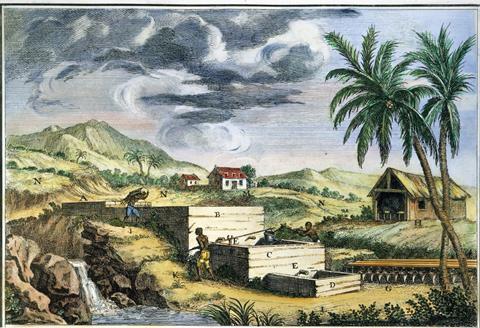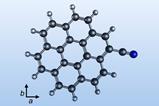The close relationship between science and slavery should not be forgotten
While 12–15 million Africans were forcefully taken from their homeland to be used as enslaved labour in the Americas in the 15th to the 19th centuries, European science flourished. Newton published his theory of gravity, telescopes were not only being used to study space but became a fashionable possession, and the Global North delighted in the exotic new plants and animals ‘discovered’ in Africa. These histories cannot be viewed in isolation; the pursuit of science and the slave trade supported one another.
Scientists were complicit in furthering slavery. Those who could benefit from the network of ships moving from one continent to another so readily aligned themselves with the slave trade to gain access to Africa and the Americas. In doing so, they became reliant on slavers for food, shelter, equipment and local transport. Scientists and slave traders worked together.
Part of Society
The Royal Society has explicit links to the slave trade. It was founded in 1660, at the same time as the Royal Adventurers Trading into Africa, one of Britain’s early slave trading corporations. Fellows from one society were members of the other. While researching old archives, historian Carolyn Roberts uncovered a letter that Henry Oldenburg, the secretary of the Royal Society, had sent to a Mr Floyd in Cape Coast Castle in present day Ghana, which functioned as Britain’s slave trading headquarters in West Africa. The letter asked about medicines used in the region as well as the bark that kept the West Africans’ teeth so white and healthy.
Mr Floyd, a minister whose chapel held enslaved children, men and women awaiting shipment, was well positioned to amass knowledge for the Society. While it is unknown whether he gathered the information, further letters prove that knowledge exchange between slave traders and Royal Society members was frequent. Roberts identified another minister in West Africa, John Smyth, who brought back knowledge of the medicinal properties of plants to the Society – all of which he learnt from the West Africans themselves.
Scientific studies of drugs and dyes opened new opportunities for slave traders. Chemicals such as quinine, indigo and carmine became valuable, and their sources were quickly cultivated by merchants – often using slaves to do the hard labour. A colony would become a commercial hub, racking up profits and creating demands for more slaves. Science, then, was not only complicit in engaging with the slave trade but in enabling and expanding it - scientists became dependent on it to reach new heights in their careers; James Petiver owned the world’s largest natural history collection of the time, which he gathered by running a global network of ship surgeons and captains who collected specimens from far-away colonies, of which nearly a third were engaged in the slave trade. And even Isaac Newton relied on data from French slave ports in Martinique to prove the gravitational pull of the moon on the Earth’s oceans.

Indigo production was one of South Carolina’s major industries in the late 1700s. The knowledge behind the growth and processing of indigo originated from the slaves of Eliza and Charles Pinckney, and the methods they developed were widely used until synthetic indigo replaced natural sources in the early 20th century. Eliza is famed for her experiments in making the blue dye, with countless articles painting her as the mastermind behind one of the most lucrative exports of the time. The 60 slaves she oversaw generally receive little mention.
A minority of scientists claimed that slavery hindered scientific progress. In his book The Science of Abolition, Eric Herschthal argues that scientists drew upon scientific disciplines to portray slaveholders as the enemies of progress. Conspicuous examples include Joseph Priestley and Benjamin Franklin. They thought treating humans like livestock was backward, unscientific and inefficient and would routinely run scientific articles against slavery in the anti-slavery newspaper North Star.
A moral campaign
These prominent thinkers went further to campaign against the slave trade. ‘No Europeans whatever use their slaves with so much cruelty as the English,’ Priestley wrote in a Sermon on the Subject of the Slave Trade, identifying the slave trade as fundamentally against Christian morals as well as presenting – what he considered less important – economic considerations. Franklin, even though he had owned slaves himself, by 1781 had become the president of the Pennsylvanian Abolition Society. He even went as far as petitioning Congress to bring slavery to an end (although he believed it ought to be abolished gradually). Whether other scientists joined their cause remains a mystery with no explicit mention in literature. However, this could be that their status as scientists did not seem relevant to their position as abolitionists.
The trafficking and exploitation of millions of Africans still has a legacy on our world today. History has vastly overlooked the roles of West African people, not presenting them as the scientists, botanists and medical practitioners that they deserve to be celebrated as. We fail to acknowledge the extent to which our current scientific ‘western’ knowledge is in fact indigenous African knowledge taken from slaves.
The decolonisation of academia and the moves many institutions are making to admit their links with slavery is a step towards redressing science’s involvement in the slave trade. However, we need to invest in research to establish the full extent of the role slavery played in the advancement of science, specifically chemistry where very little is known. We must continue to challenge the source of existing knowledge to ensure credit is rightfully given to those who contributed to, and currently influence, science.

















2 readers' comments